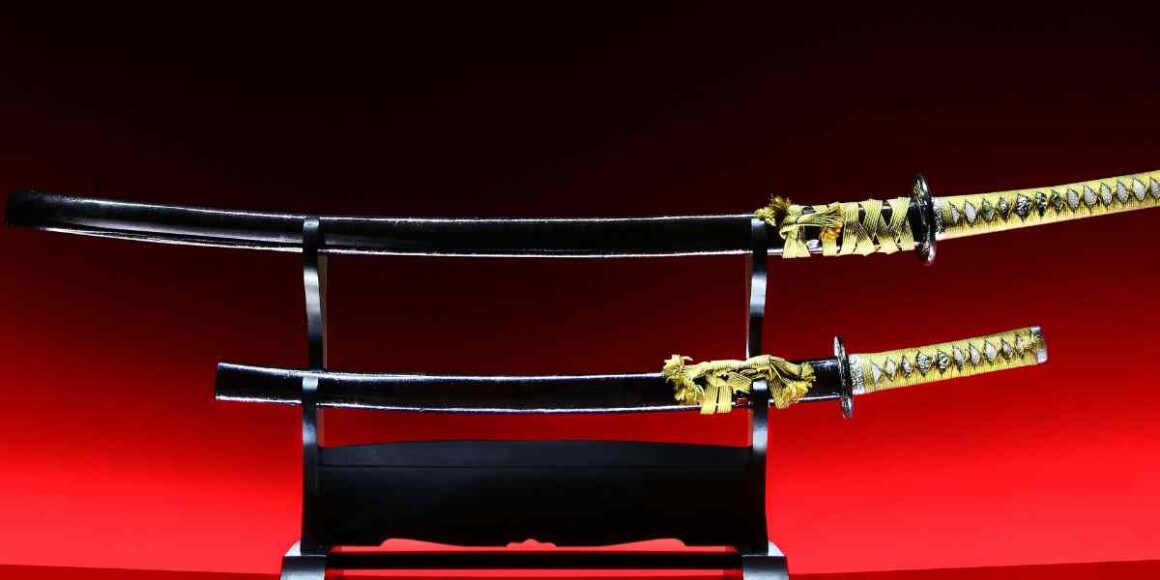
If you’re a fan of Japanese art, then Katanas will particularly draw your attention. Samurai swords, once reserved for the elite, are still being made by the same ancient tradition of making Katanas using knowledge passed down over thousands of years.
Katana blades offer superior sharpness, rigidity, flexibility, and ease of handling that no other sword can even come close to, even with modern technology and any forging technique.
Japanese Katana swordsmiths are the masters in their realm, and there are only a few Katana makers today left. Our main focus of this article is to provide you with the right insights into how Katanas are made and where you can get authentic Katanas.
Making Katanas: The process
Katanas go into a whole new level of journey into their formation. The process starts with the steel formation, tamahagane, produced by smelting iron sand (sand containing iron ore) with charcoal in a large clay furnace known as a tatara.
Tatara masters monitor the Tatara carefully once the correct temperature is reached, adding in iron sand and charcoal as necessary. For this stage to be successful, the team must remain on site for 72 hours without interruption.
Inspecting the steel
After the smelting process has been completed for three days, the tatara masters take the tamahagane out of the clay furnace. Afterward, the steel mass is separated based on its carbon content.
Combining high-carbon steel and low-carbon steel will produce blades with razor-sharp edges and exceptional toughness. Steel swords made of only one type would be brittle or easily dull if they were made exclusively from one type.
Removing impurities from steel
To further combine iron and carbon in the tamahagane and to draw out any remaining impurities, such as slag, the top pieces are sent to a swordsmith, who heats, hammers, and folds them repeatedly.
Blade smithing
In the third step, the smith heats high-carbon steel and shapes it into a long piece with a channel shaped like a U after the impurities from each steel have been hammered out.
Furthermore, a strip of low-carbon steel is hammered into a shape that fits snugly within the channel and is heated. Afterwards, the two metals are forged together. The two types of steel, hard and low-carbon steel, are now located exactly where they should be; the hard steel serves as the sword’s outer shell to provide the sharp edge, and the hard, low-carbon steel serves as its core.
Anodizing the blade
Now that the blade steel has been assembled, it must be fired again. Blades’ upper sides and dull back edges are coated with a thick mixture of clay and charcoal powder, leaving their primary edges barely covered.
When the blade is polished, this hamon design is revealed, which provides both protection and adds visual interest to the blade. A temperature of just below 815°C (1500°F) is then applied to the blade. If the blade gets any hotter, it will crack.
Curving the blade
A blade is pulled from a fire and submerged in water, also known as quenching. Due to a difference in contraction speed and degree between the two types of steel used in the blade, the sword bends. This process creates a sword’s signature curve.
Blade polishing
As soon as the blade is fully forged, it is passed to the sword polisher for polishing. To achieve a razor-sharp edge on the sword, the blade is meticulously polished with a series of grinding and polishing stones. It can sometimes take months for this polishing step to be completed.
Assembling the blade
Metalworkers mount the blade on the sword’s hilt along with its decorative guard. Following this, the blade was fitted with a lacquered wooden scabbard, which was then intricately decorated by artisans.
Afterward, gold, leather, or stone is used to fashion the handle. Final steps such as these create finishing touches that are as artistic as the blade itself.
So this is the whole journey that a Katana for sale goes through to get through the finishing phase, which is truly admirable.
How do you buy affordable and Excellent Quality Katanas?
From the very beginning, it might have been obvious to you that making a Katana is not something ordinary in any way. More and more Katana makers are vanishing, so their monopoly is increasing, resulting in skyrocketing prices as they are unable to compete with each other.
Of course, we can’t neglect the struggle and skill to make Katana put by truekatana.com, but seeing from the collecting pov of getting a Katana to showcase or to gift, we can have very affordable options too.
Many durable katana swords are now available and manufactured in China by the master swordsmith of Longquan. Known as a family sword city with more than 2600 years of history, it is one of the best places in the world to manufacture swords.